The Origin PC BlackWidow Chroma Mechanical Keyboard Review
by E. Fylladitakis on August 6, 2015 8:00 AM EST- Posted in
- Peripherals
- Keyboard
- Origin PC
- Razer
- Mechanical Keyboards
The ORIGIN PC BlackWidow Chroma Mechanical Gaming Keyboard
There are very few physical differences between the ORIGIN PC BlackWidow Chroma and the Razer BlackWidow Ultimate that we reviewed over a year ago. The only discernable difference is the color of the metallic support plate beneath the keys, which has been changed from green to white. Also, the only difference between the ORIGIN PC and the Razer version of the BlackWidow Chroma is the illuminated logo at the front of the keyboard, with each company using their own. Other than the different logo, both keyboards are identical in every respect.
Externally, the BlackWidow Chroma looks like a typical plastic keyboard with five macro keys installed on its left side. The top cover is sprayed with a fingerprint-resistance matte black paint that feels and performs admirably. There is no actual wrist rest and the slightly elongated plastic body of the keyboard does not really help in that fashion. There are no dedicated multimedia or special function keys on the BlackWidow Chroma. Advanced functions can be accessed by holding the FN button pressed and then pressing one of the function keys. For example FN + F11 lowers and FN + F12 increases the intensity of the backlighting respectively.
A USB port and headphone jacks can be found at the right side of the keyboard. With the exception of the thick braided cable exiting the chassis, there is nothing of particular interest on the back side of the BlackWidow Chroma. The thick cable ends to two USB connectors and two 3.5 mm jacks. Only one USB connector is required for the keyboard itself to operate. The second USB connector powers the pass-through USB port and, obviously, the two 3.5 mm jacks are also acting as pass-through connectors for the headphone jacks on the keyboard.
The keycaps are printed with large, futuristic characters. No extra keycaps are provided, with Razer using standard cylindrical keycaps. They appear to be made of transparent or semi-transparent plastic that has been painted afterwards. The smaller keys are very firm and robust, but the large keys wobble a little, even though the required actuation force feels uniform across the length of the key. This is greatly due to the use of stabilizer bars for the large keys, which do even the force but do little to prevent the keys from wobbling.
Beneath the keycaps, we found the Razer Green mechanical switches. Technically, Razer does not make switches of their own and these are products of Kaihua Electronics (also known as Kailh), the logo of which is printed on the keys. We had a thorough examination of Razer’s switches in our review of the BlackWidow Ultimate. For those that do not wish to delve into the details, it would suffice to say that Razer’s Green switches are practically identical to the Blue clicky tactile switch of either Cherry or Kailh.
Unlike the Cherry MX approach that has the body of the switch being transparent to help distributing the lighting evenly around the key, Kailh is using old-fashioned "globe" LEDs at the top center of the switch. As such, the color projection is a lot stronger at the top half of the switch. This is not easily discernable if the entire keyboard is set to one color, but it becomes apparent if multiple colors are in use. In the extreme example of the picture below, the "R" and "Y" keys project their color on the F row while the lighting of adjacent keys is saturating the color on their sides and bottom. The "B" key is red but the lighting around it is partially purple and orange, affected by the adjacent violet and yellow keys. Within the areas that there is a single color for all keys, the lighting is uniform.
The removal of the plastic covers reveals the metallic support plate and the main PCB of the keyboard. We strongly recommend against the removal of the covers by any user, not only there is no reason for anybody but very experienced modders to remove the plastic covers, but also because the top plastic cover is made out of very brittle plastic and that is very easy to break if bent even a slightly bit. The assembly quality of the BlackWidow Chroma appears excellent, with the soldering job much improved since the last time we had a look at a BlackWidow keyboard.
A NXP LCP11U24F 32 bit 50 MHz ARM Cortex M0 microcontroller is the main processor of the BlackWidow Chroma and four P3917 3731 LED microcontrollers are responsible for the LED lighting. While this chip is not lacking the processing power of the chips many competitors are currently using, it has very limited memory, equal to the amounts we are used to seeing in non-programmable (let alone RGB) keyboards. Nevertheless, for Razer to choose this particular microcontroller, it means that it should handle all tasks efficiently.


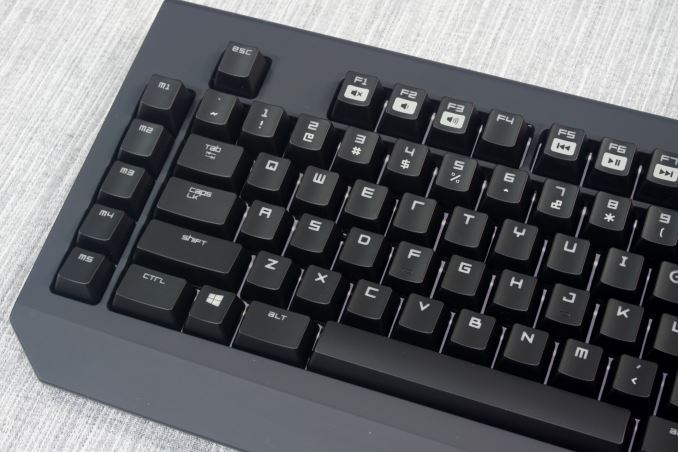
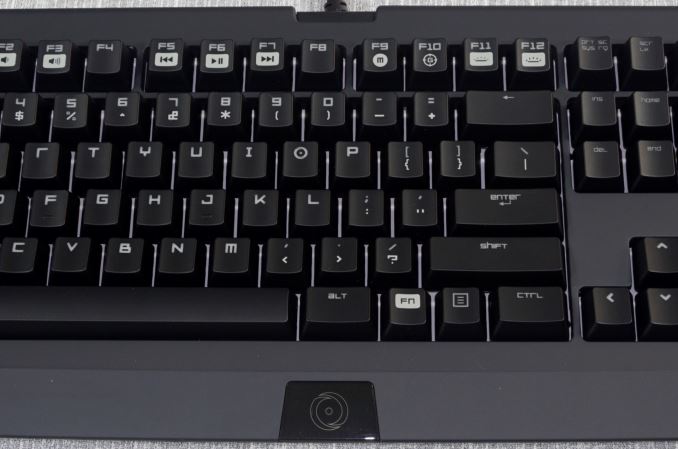
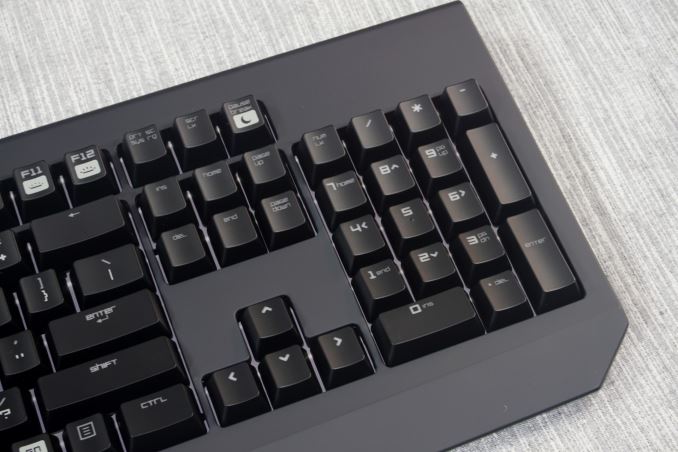
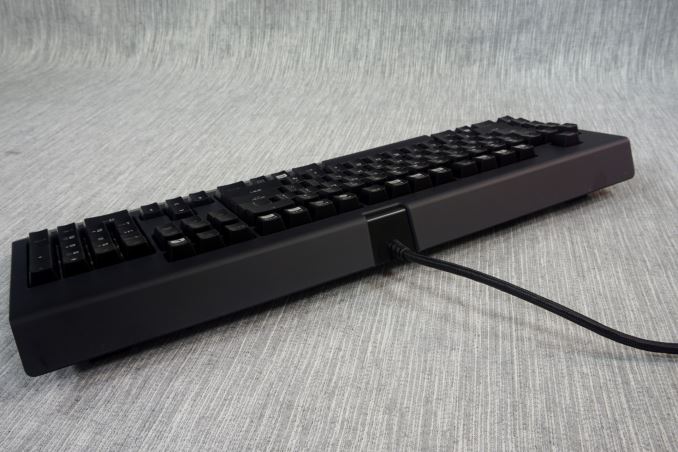
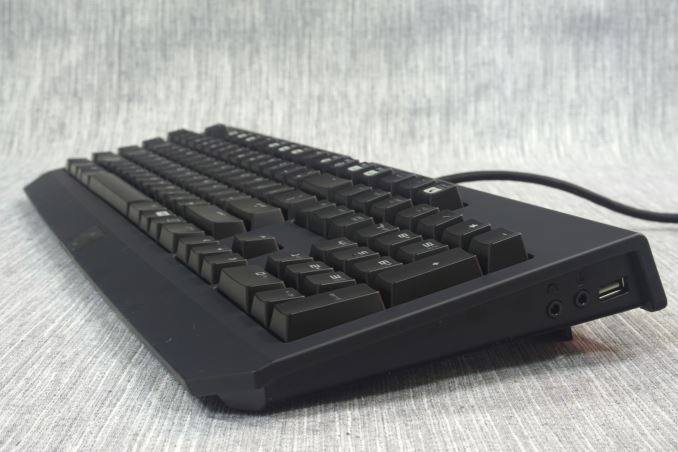
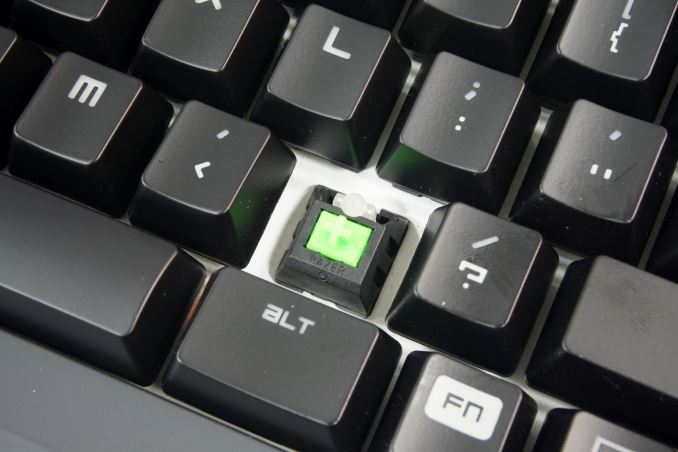
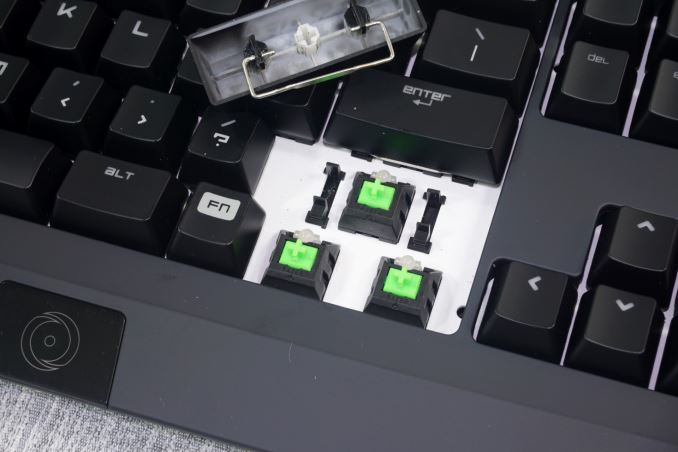
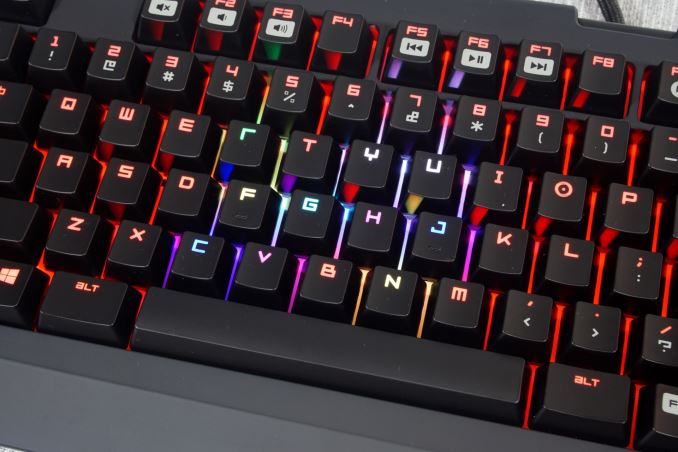

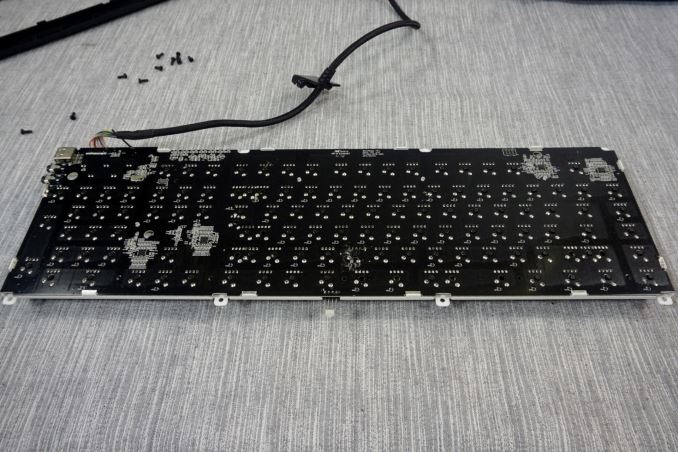
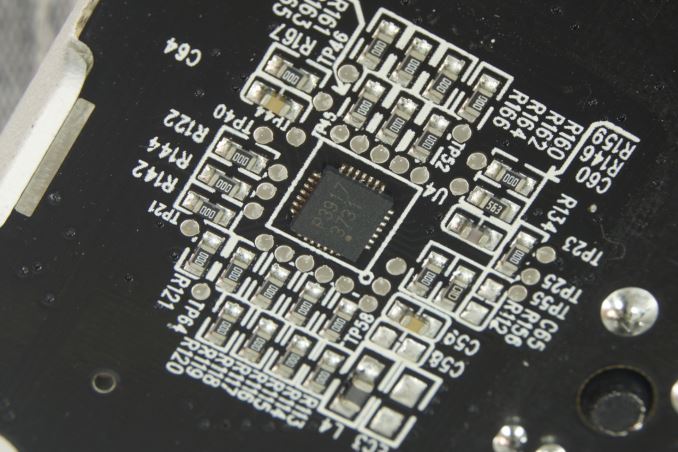








44 Comments
View All Comments
FMinus - Wednesday, August 12, 2015 - link
You're the lucky one.Every single cold boot, the mouse need about 10 minutes to start working correctly with Synapse installed. Without synapse, any mouse with additional buttons like the Naga or Ouroboros are kind of useless so I have to run it - which makes my mornings with coffee sitting in front the screen with the mouse jerking around for 10 minutes kind of disastrous.
That being said, for me the Razer mice have had a longer lifespan as any other brand, that's why I keep buying them, but if this cold boot crap isn't ironed out soon (because it's happening for about a year) I will have to look for something else. And I'm not the only one with those issues.
Wwhat - Saturday, August 8, 2015 - link
Reason enough for me to never ever get a razer product. Even when you can probably find ways around that nonsense, there is a principal to the thing too. And requiring that account probably means it comes with spyware too, so no, not for me or anybody with half a grain of sense.Refuge - Thursday, August 6, 2015 - link
Shit, if it is identical I would have taken a picture of the new logo, the under plate, and the new O button. Slapped a link to the review a year ago, and then called it a day man.I'm sure you had to have something more interesting or at the very least, a better use of your time than this review. Right?
chrnochime - Thursday, August 6, 2015 - link
They didn't have time to even spell check their first paragrah where "botique" sprung up, so I guess they're too busy doing something else.SirGCal - Thursday, August 6, 2015 - link
Well...1) 10 key rollover isn't enough, I hit that all the time. I had a 12 key and had to give it up. N key is preferred but I have some 20+ keys that work fine also.
2) More importantly, the F keys are in the wrong location. F1 should be roughly directly over the 2 key and there should be a space between F4 and F5 and another between F8 and F9...
3) Razor switches instead of the trusted and proven Cherry? I think I'll pass... Especially for the price.
Stuka87 - Thursday, August 6, 2015 - link
The keyswitches in the Black Widow Ultimate Stealth (Which I have) are awesome. My favorite keyswitches that I have used. They are far quieter than any cherry switch I have used (Although I have not used all of them) and they have a very nice feel. I have zero complaints about the keyboard.I personally have not overrun its anti ghosting limit. Although this really depends on the games being played. I also have no issue with the F-Key locations, I use them very regularly. There is a larger gap between each set of four than the keys in each group. So you can easily feel the gap between F4 and F5.
SirGCal - Thursday, August 6, 2015 - link
I hit the F keys out of muscle memmory, when they are offset like that, I'll be hitting the wrong ones. It's not about feeling a gap as much as nailing the right key where you expect it to be blind-folded and without any 'feel'. And I actually do type fast enough that the last 12 key anti-ghost actually had issues now and again. My 20 key and N keys have never had any issues. Although I do prefer the black and brown keys myself for speed. I like to hear the keys a bit. I don't like ultra-quiet keyboards. But also I have a pile of black and brown (and some red and blue even) cherrys for replacing. Just a quick solder job or less depending on the board.I have Primary Progressive Multiple Sclerosis which has since attacked my hands also. They are, while always in pain, effectively numb. Without the muscle memory, I'd never be able to type which I do for a living and can do very very fast. Also with the type of work I do I use a lot of complicated key combinations which can also include the F keys. They have to be standard placement or the keyboard is junk for me. My situation might be rarer then an average gamer obviously but on that note I also see no reason in spending the budget on high-end mechanical hardware just to pew-pew... I do game sure but as an afterthought to work. I buy a keyboard for speed and accuracy while speed typing and programming. Everything else is 2nd seat or lower.
xenol - Thursday, August 6, 2015 - link
Do you have more than 12 fingers or type faster than 1000WPM?teiglin - Thursday, August 6, 2015 - link
While I agree that the software is woefully inadequate for anything beyond the most basic macros, my (2013 I think) blackwidow ultimate stealth's macro recorder does pick up mouse clicks, but not mouse movement. It's odd that they would step backwards for a newer product.SpeedMan88 - Thursday, August 6, 2015 - link
Anybody tried the Logitech G910 keyboard? I'm not overly impressed by this Razer keyboard, but wondering how it compares to other keyboards in the gaming segment.